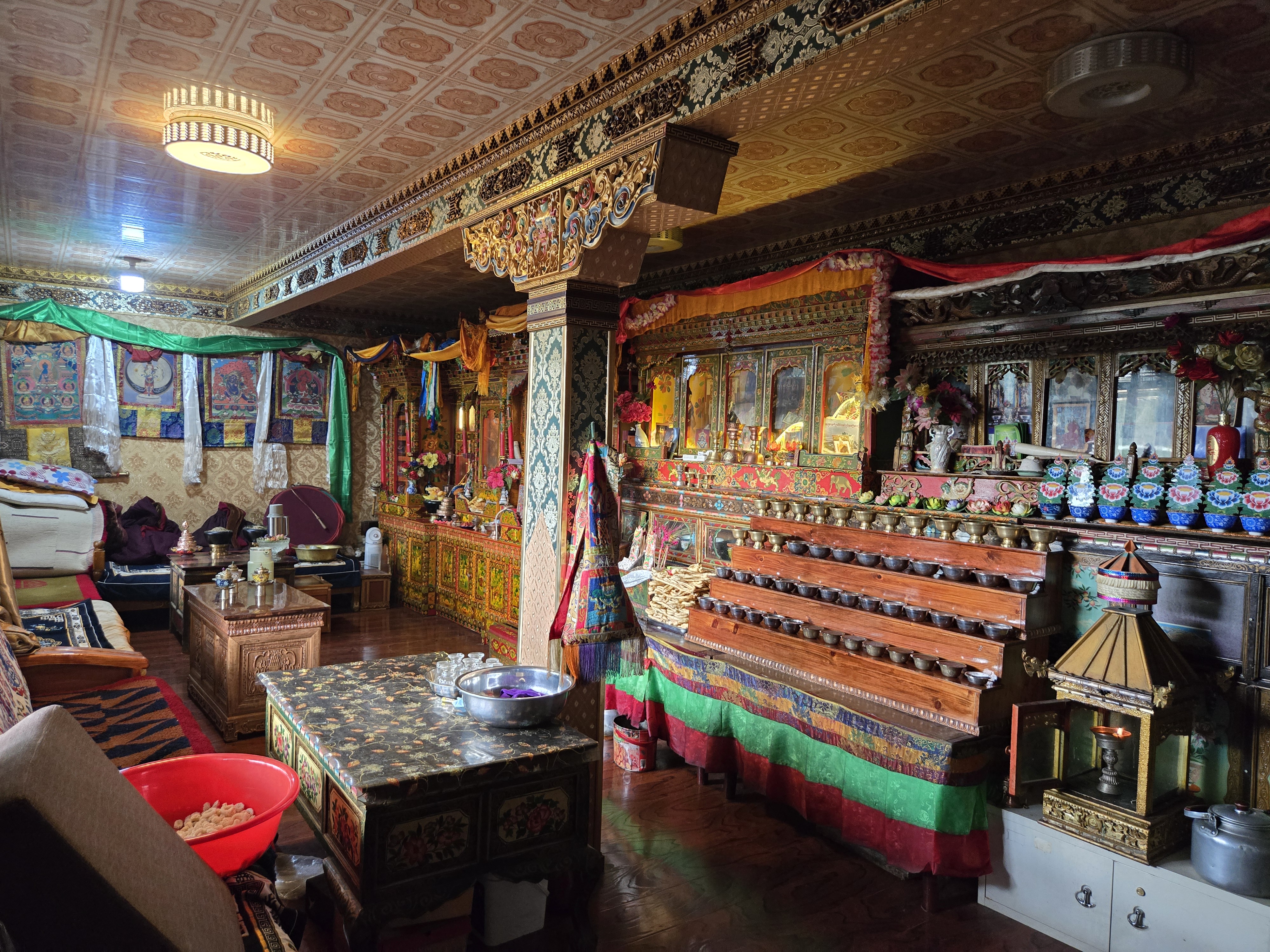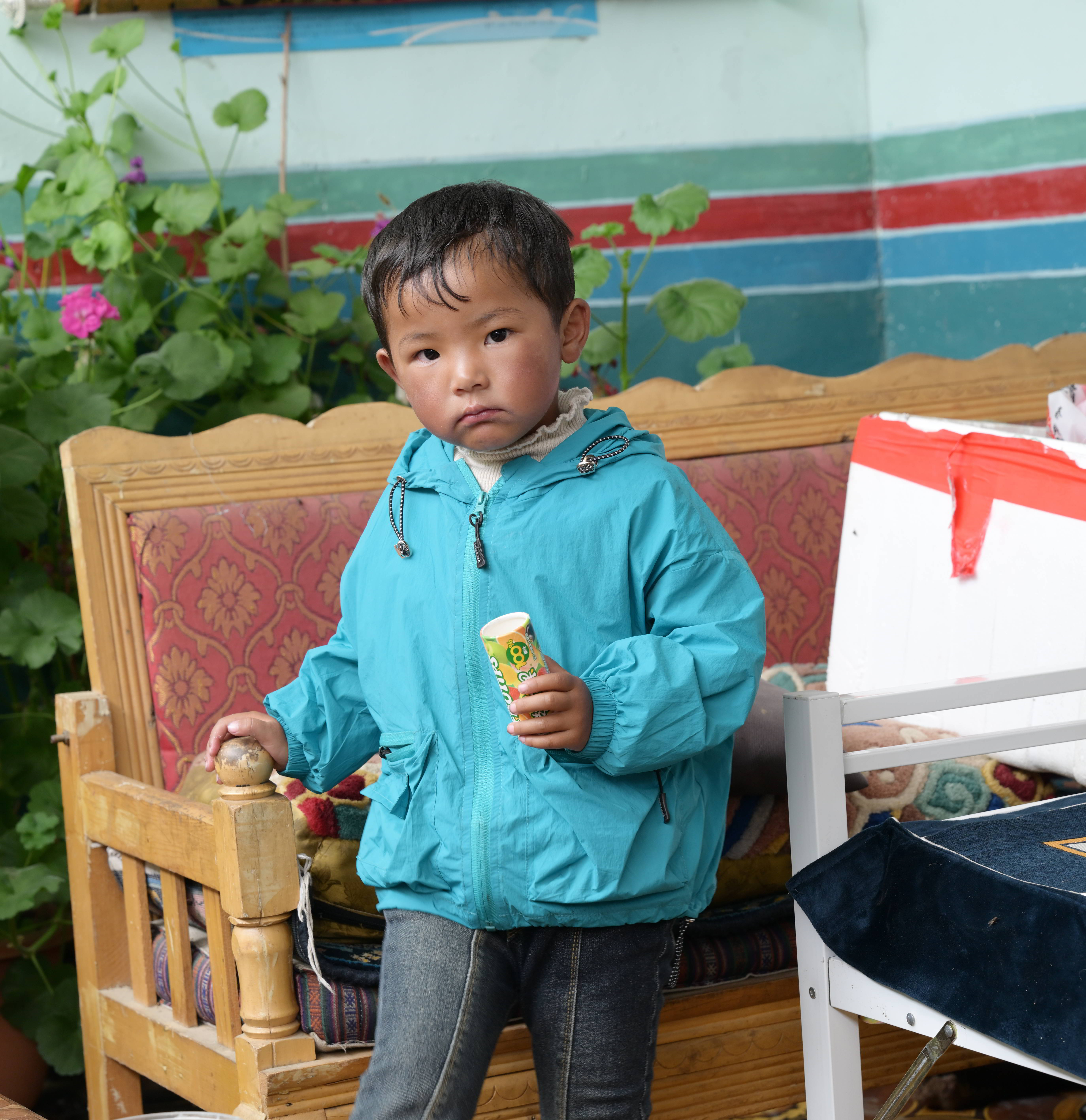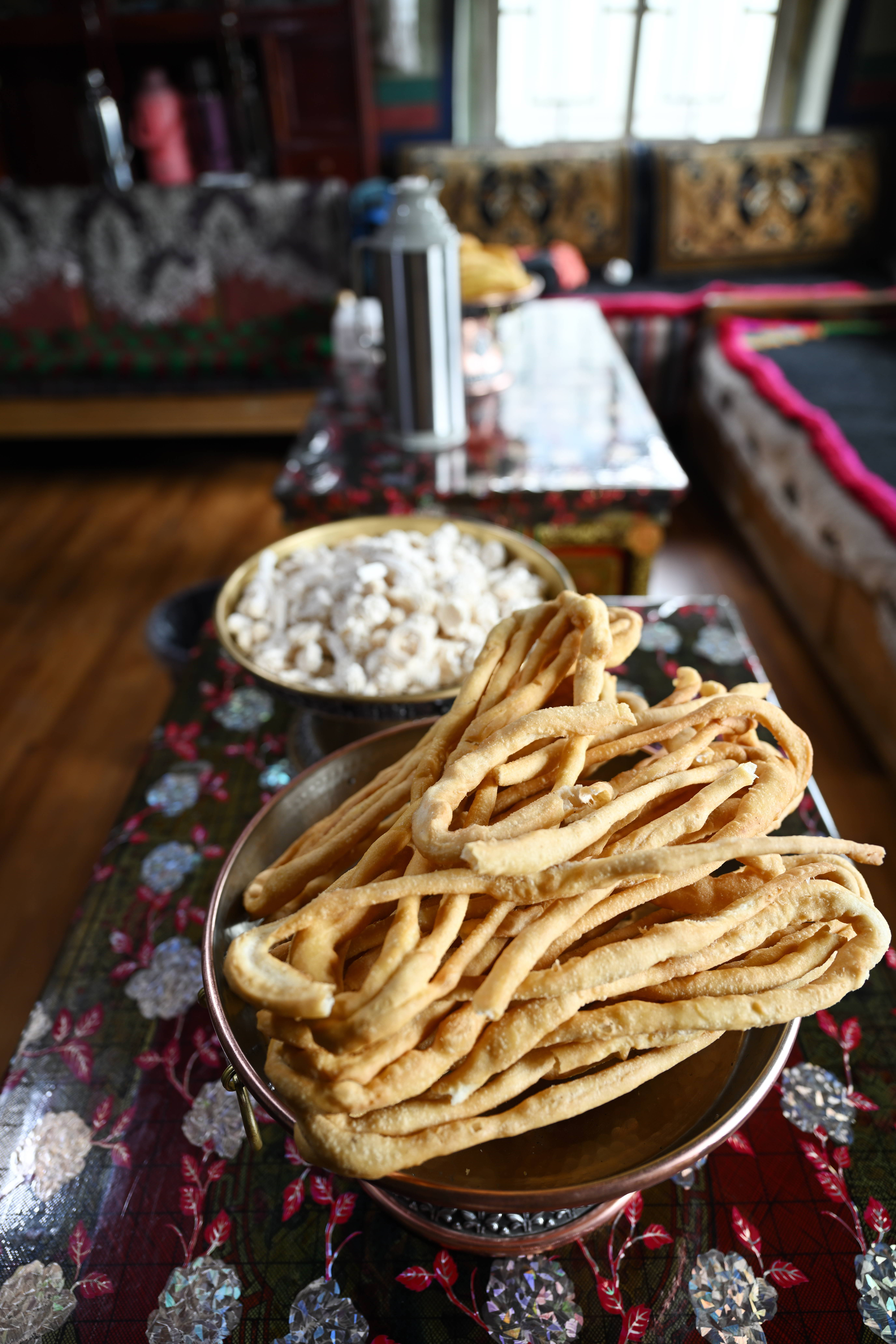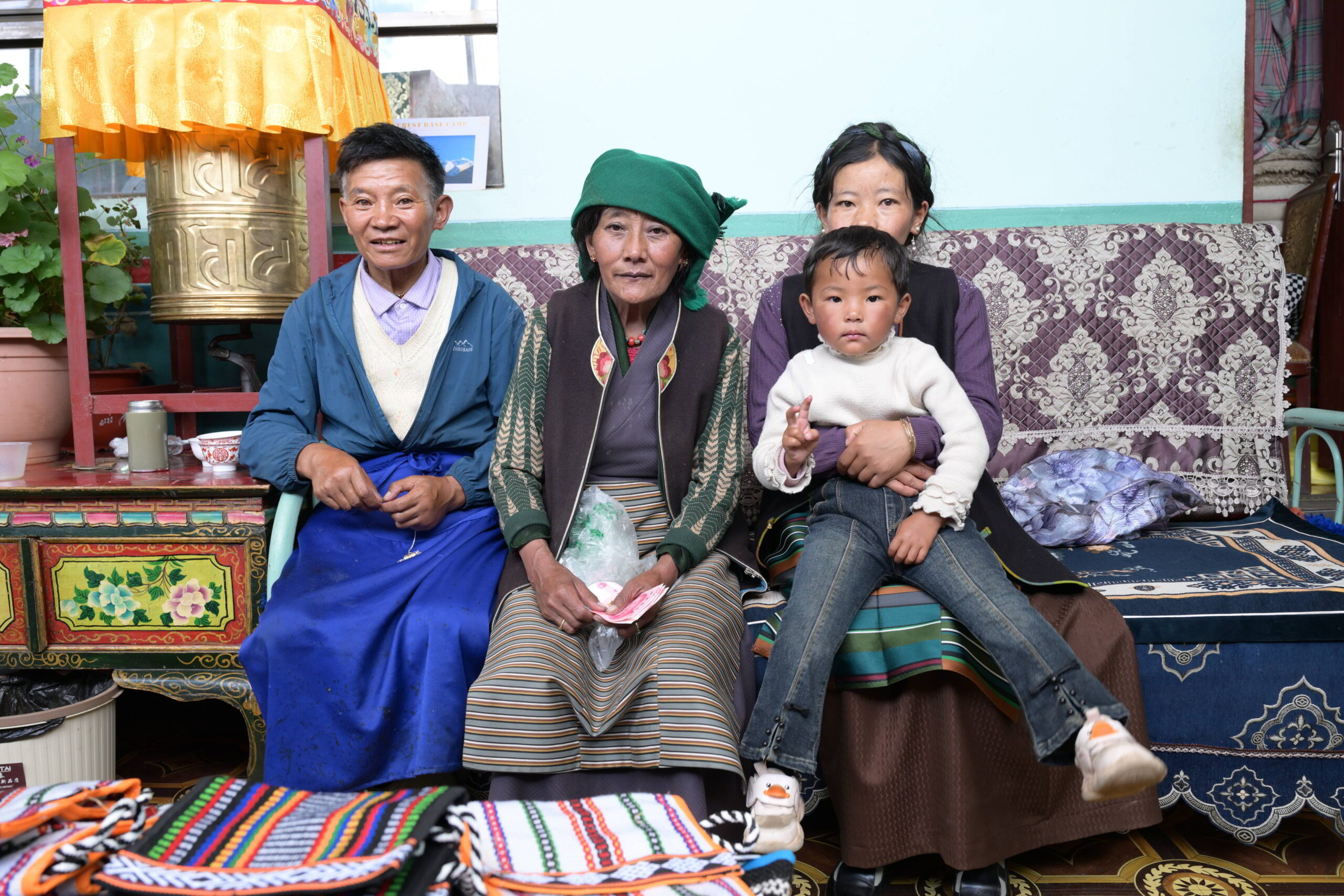Who hosted us
On our way from Lhasa to Shigatse, we stopped by a local Tibetan family’s home for lunch. It was a unique experience visiting the inside of a traditional Tibetan home and enjoying their hospitality.
Key features
- Affluent Tibetan families maintain a prayer room (picture below), which is a replica of a monastery. There are no pictures of family members. The Panchen Lama’s picture and Thangka paintings are popular (Read about Thangka here.
- Yak meat is the #1 diet for Tibetans. Buttered tea, made with butter from yak milk, is the #1 beverage. It provides energy and a salty taste. Surprisingly, Tibetan food contains a low amount of sodium. Sweet is utterly scarce.
- The host family likes to serve silently with smiles on their faces. Asking to pose for a picture might be awkward at times.
Tibetan culture, with its rich traditions spanning thousands of years, is truly unique. Tibetan families are renowned for their warm hospitality; inviting guests, including foreigners, into their homes is considered a great honor. These traditional residences, vibrant with color, reflect the influence of Buddhism. For Tibetans, daily life is infused with spiritual rituals – prayer, meditation, and the recitation of mantras with a rosary. While monks and lamas may devote more time to these practices, householders also uphold the three jewels of Buddhism: the Buddha, the Dharma (the teachings), and the Sangha (the Buddhist community). This devotion is practiced both at home and in monasteries. In traditional Tibetan society, extending hospitality is considered a virtue.





